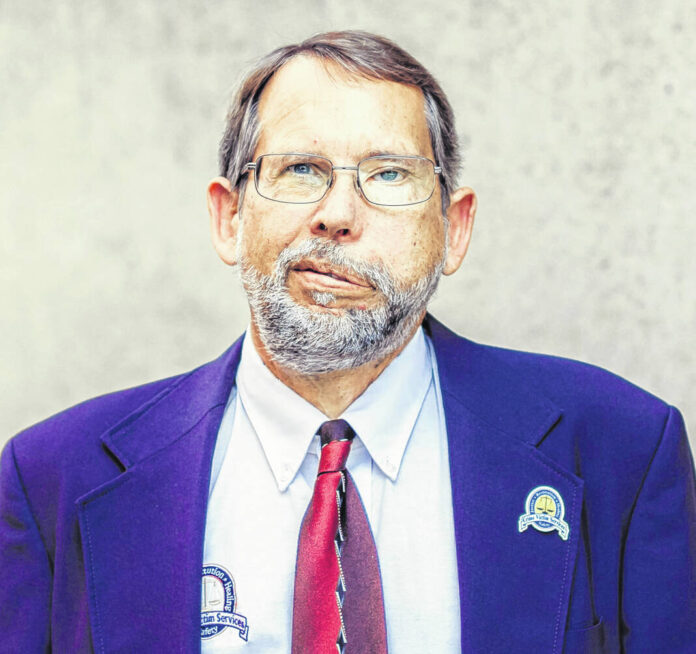As I conclude my career at Crime Victim Services in Allen and Putnam Counties, I find myself reflecting on the incredible growth of what started as a victim-offender reconciliation program, and on my deepening understanding of life along the journey.
Over the decades, CVS expanded its vision to create meaningful services for victims of more and more types of crime. Throughout, the mission of CVS remained steadfast: to bring victims of crime safety, healing, justice and restitution.
Three big “wins” for crime victims during my tenure started with the 1994 passage of the Ohio Constitutional Amendment guaranteeing victims the right to fairness, dignity and respect. In 1996, ORC 2930 passed, which gave victims the right to be informed, present and heard in criminal justice proceedings. In 2017 the Ohio Constitution was amended again (Marcy’s Law) expanding rights to more victims and to mandatory restitution. Ohio still needs to pass HB343 and victim rights funding to assure that all 88 counties implement victims’ rights similarly. And efforts continue for passage of a U.S. Constitutional Amendment to guarantee victims’ rights across the nation.
I’ve often been asked, “Isn’t it hard to work all day with such horrible crimes?” My answer is that daily exposure to the many traumas innocent people endure caused my vision for better victim services to run deeper. As a young, healthy, White man, I had to learn about the challenges of the marginalized in our society. Seeing the overwhelming frequency of violent crimes committed by men against women pushed CVS to begin a 24-hour rape crises line and hospital response in 1997. In 2011, CVS began a focus on the unique issues experienced by victims with special needs (elderly, developmentally disabled, deaf, non-English speaking, etc.).
My most recent life lesson came from listening to staff on the depth of racial bias that exists in society. A review of Lima’s history was revealing.
In 1916 the last attempted lynching in Ohio took place in Lima, where a mob of 5,000 gathered to murder a Black alleged perpetrator held in the Allen County Jail. However, White law enforcement and prosecutors stood up for impartial justice, working together to protect this man. Most notably, White Allen County Sheriff Sherman Eley was brutalized, home ransacked, hog-tied to the front of a truck and then driven from Lima to Ottawa, foot crushed, and his sick 3-year-old daughter died after being carried around by mob leaders.
Another sobering event took place on Aug. 4, 1923, when the largest Ku Klux Klan rally in America was held in Lima with a crowd of 100,000.
What I draw from this history and my observations is that racism is in our past in obvious ways but also in our present in real but subtle ways. Likewise, so is the capacity to stop racism within us.
I had considered myself “colorblind.” However, upon humble reflection, I realized that racial bias is buried in my words, deeds and culture. Yes, without malice, but nonetheless, my own “blinders” contribute to destructive racism in our society. Awareness is the first step toward correction.
I wish I would have connected the dots faster regarding violence against women, special-needs victims and racial injustices. My life experiences, gender, abilities and race were (are) hindrances. CVS is on the right track, seeking “justice for all” and “domestic tranquility.” CVS works to ensure that victims feel safe to bring historical racial and victimization trauma out into the open. We don’t just assist, we advocate. We move walls and remove barriers. Our natural allies are law enforcement, prosecutors, judges and probation officers. Together, we strive to create more equitable systems, processes and cultures that can end lingering racial and gender inequities. CVS exists to skillfully serve and proactively prevent victims of violence and oppression. That is our vision.
Although I am leaving the organization, I commend the staff of CVS, justice officials, law enforcement and the people of Allen and Putnam counties for having hard conversations and for looking within their systems for ways to improve. It requires collaborations, personal will, time and forgiveness to move mountains.
I encourage you all, keep trying. When Jesus was asked, “How do I get to heaven?” he answered by saying we must love God and our neighbor – and then Jesus described “neighbor” as a crime victim in the Luke Chapter 10 Good Samaritan Story. He concluded by saying, “Go and do likewise.” Whatever your faith, our lifetime calling is for us all to discover how to love our neighbor.
David Voth recently retired as executive director of Crime Victim Services in Allen and Putnam Counties. His column does not necessarily reflect the opinion of The Lima News editorial board or AIM Media, owner of The Lima News.







